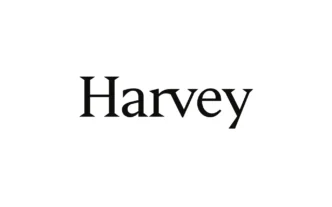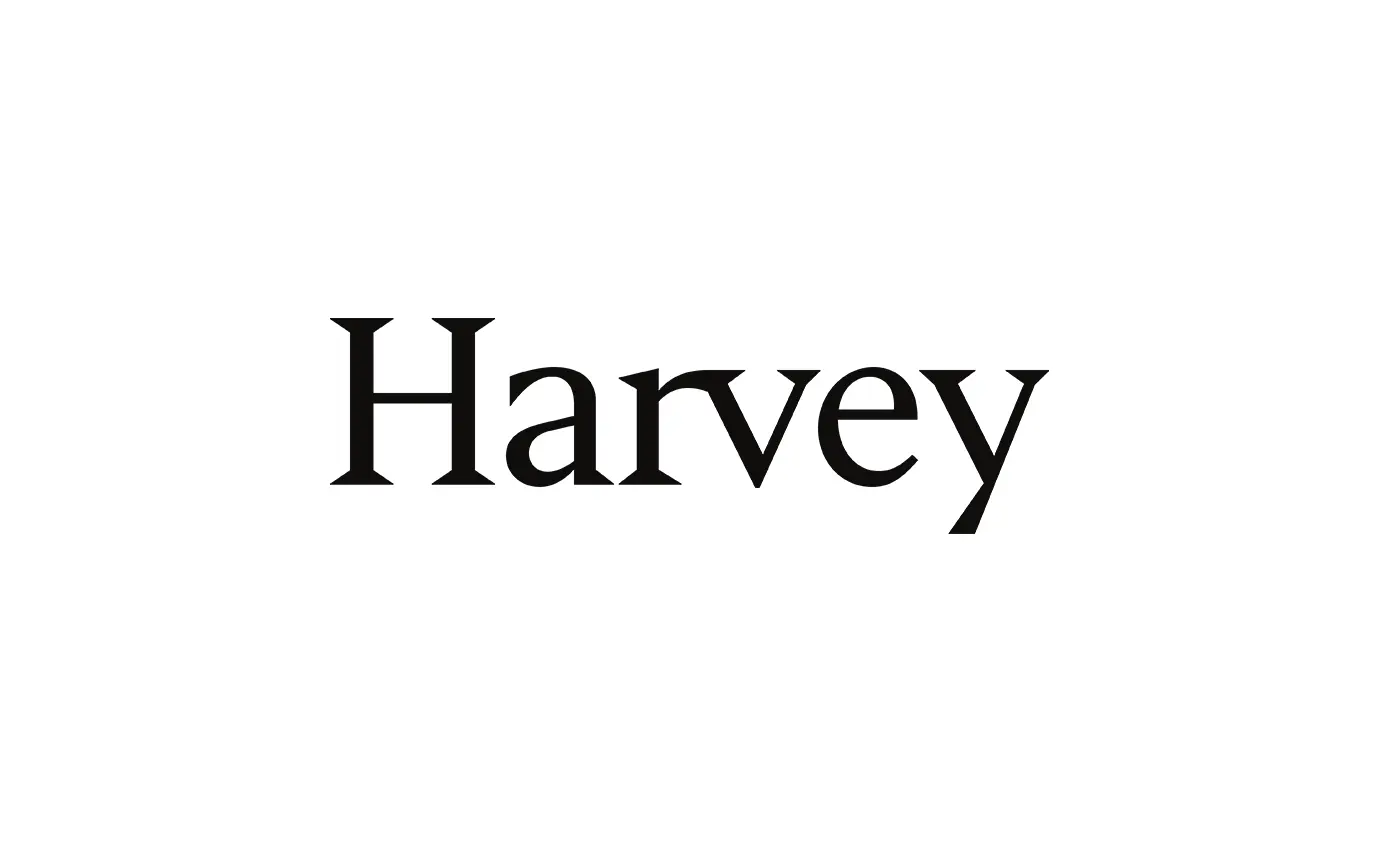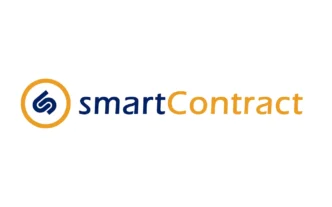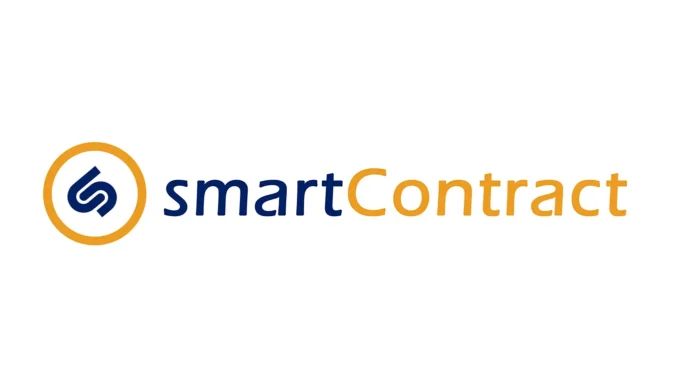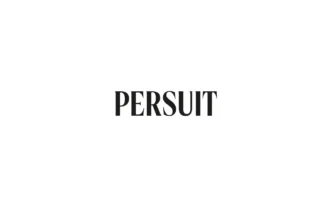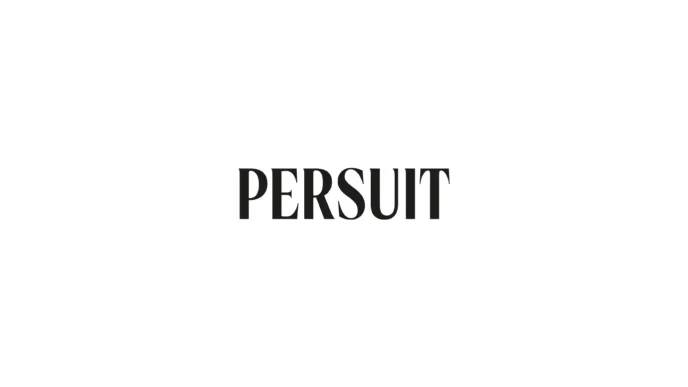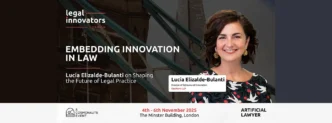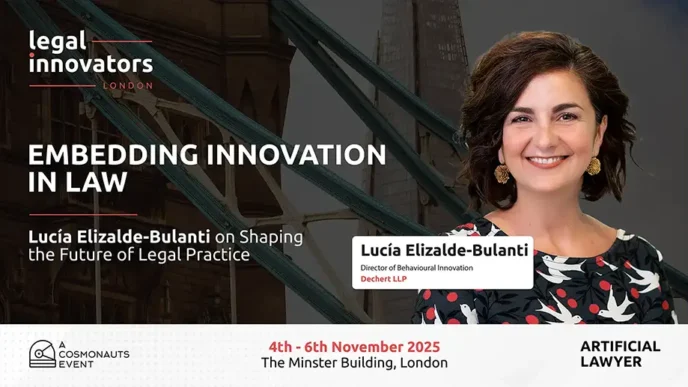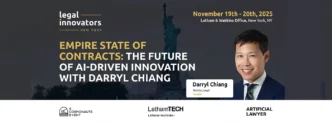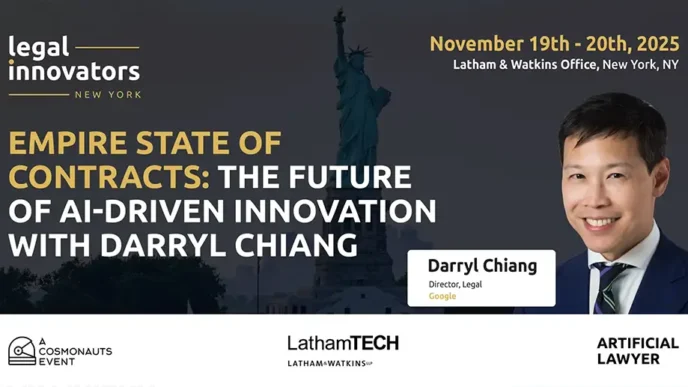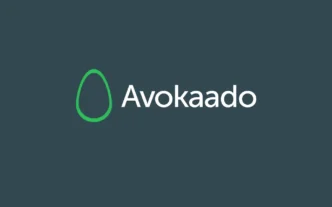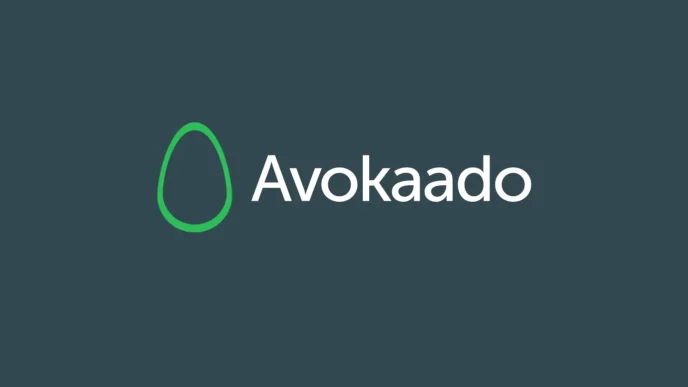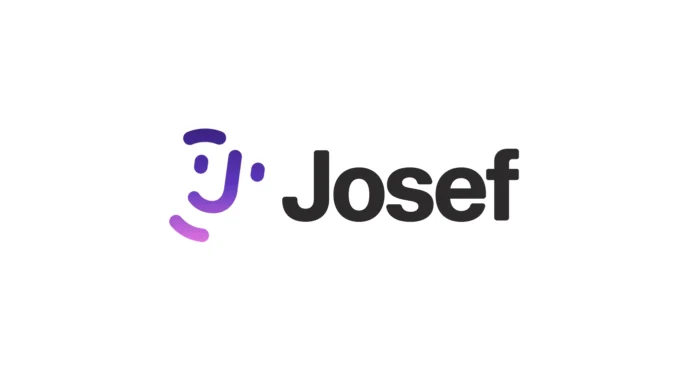If you’re subscribed to this newsletter, you’re probably interested in legal tech, and we’d say it’s safe to assume you’ve heard about Harvey, which has quickly become one of the most closely watched names in legal technology.
Harvey is positioned as a domain-specific AI platform for law firms and professional services with over 335 clients in 45 countries, and applications across contract analysis, due diligence, litigation, compliance, and more. As the legal tech space has evolved, we’ve watched Harvey become one of, if not the most important legal tech tool for lawyers. Despite its already favourable market position, Harvey is not complacent. The company continues to innovate and expand, and today added another tool to its arsenal: Workflow Builder.
With Workflow Builder, Harvey is giving firms a new degree of control over how legal expertise is captured, scaled, and deployed with AI.
“Every firm wants their tech stack to be customized to their unique ways of working and experience. Workflow Builder gives legal teams the tools they need to build agents as thoughtful, nuanced, and strategic as they are. We’re proud to have developed it in close partnership with some of the world’s most forward thinking legal teams, and look forward to seeing what they and future customers unlock with Workflow Builder.” – Winston Weinberg, CEO, Harvey
Developed in close partnership with leading international firm Paul, Weiss, and select global launch partners, Workflow Builder is Harvey’s latest addition to its enterprise-grade platform. It offers law firms a way to turn internal legal processes into customized AI workflows with no code required. With Workflow Builder, legal teams can structure workflows using a variety of blocks, embed firm-specific context like templates and guidance, build logic including conditional flows, and control access with granular permissions.
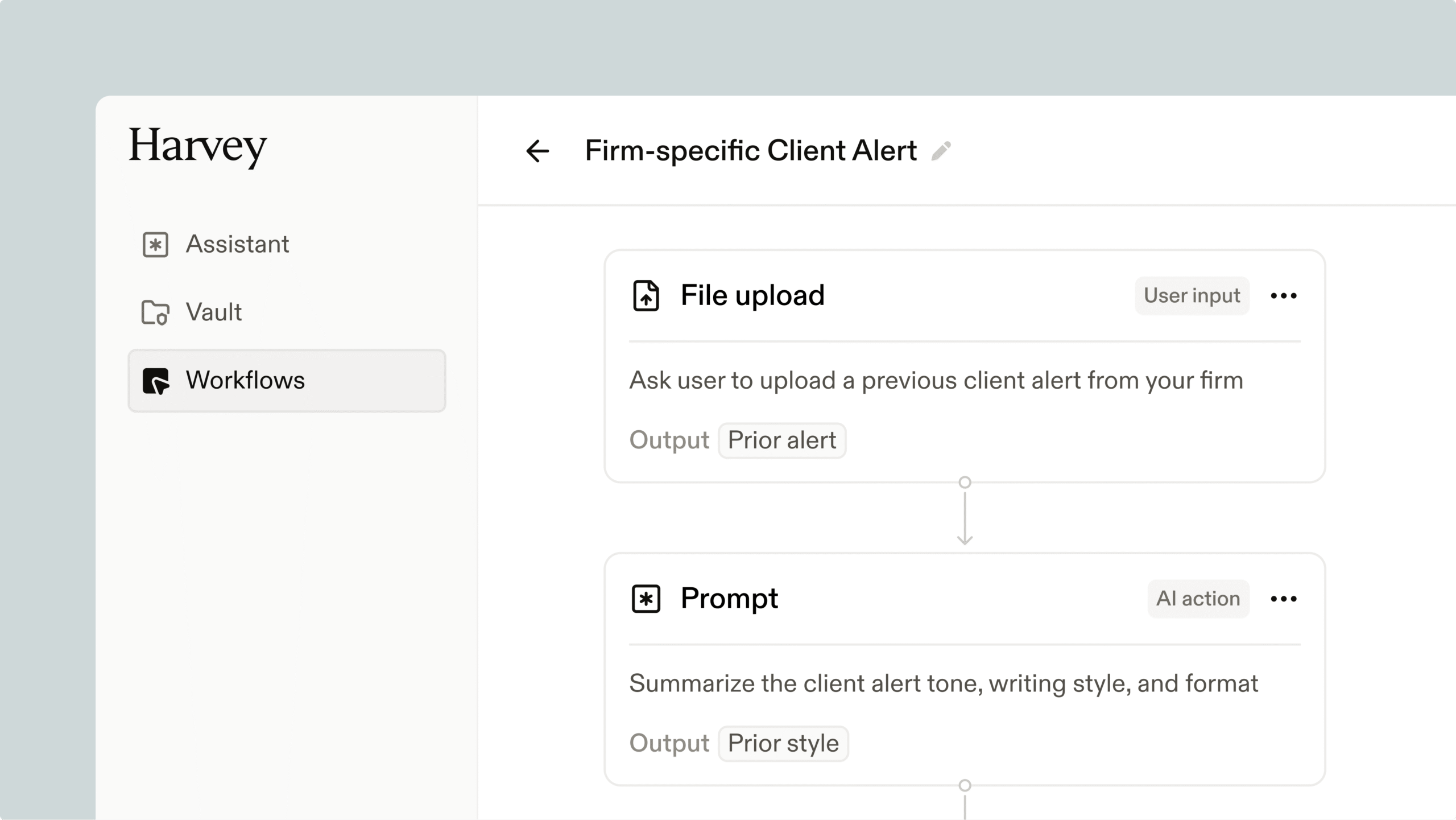
TLW: Workflow Builder introduces a new model for AI adoption in law. We asked Michelle Arguelles, Senior Product Marketing Manager at Harvey, how she anticipates firms will benefit from the ability to encode their own tone, process logic, and expertise directly into custom workflows.
Michelle: “Workflow Builder shifts firms from being users of generalized tools to creators of firm-specific systems. By allowing legal teams to encode what makes their own tone, processes, and expertise into custom workflows, Harvey gives firms a way to systematize their competitive differentiators and scale that across matters and practice areas.”
AI That Understands Law: Harvey’s Domain-First Philosophy
Unlike general-purpose AI tools that attempt to serve broad user bases, Harvey was built from the outset as a platform focused specifically on legal and professional domains. At its core is a cascading architecture that orchestrates large language models, retrieval-augmented generation systems, and reasoning models to handle complex legal content with a high standard of precision. This multi-layered setup allows Harvey to move beyond simple summarization or text generation, supporting deep synthesis and task execution across multiple practice areas and jurisdictions worldwide.
While the architecture behind Harvey is technically sophisticated, the goal is straightforward: to help professionals produce high-quality, legally sound work product at speed without sacrificing contextual accuracy.
TLW: The Harvey platform combines multiple layers of AI to handle legal work. We asked Michelle to elaborate on how this architecture helps legal professionals produce more accurate, grounded results, especially in high-stakes workflows.
Michelle: “Harvey combines powerful LLMs with tools that pull in trusted legal data and firm-specific documents, so answers are based on real information, not guesswork. Each answer includes sentence level citations, so users can easily trace outputs back to their original sources and review them as needed. Guided workflows with built-in human checkpoints further reduce errors and help ensure outputs meet legal standards. This makes Harvey more accurate and dependable than general purpose AI, while also maintaining strict confidentiality and enterprise-grade security.”
Building End-to-End Legal Infrastructure
When Harvey first entered the legal tech landscape, its primary offering was a domain-specific assistant, a generative agent trained to understand legal nuance and synthesize complex materials on demand. That functionality remains central, but the scope of Harvey’s platform has expanded to a comprehensive, end-to-end system for legal work. Today, users are not just delegating isolated tasks to an assistant; they’re building systems, storing documents, running review cycles, and orchestrating multi-step processes within the platform.
In environments like litigation, firms are using Harvey to analyze complaints, draft interrogatories, and summarize case materials. In compliance and internal governance, the platform is powering workflows for generating client alerts, formatting memos, and producing structured deliverables from firm templates. These examples point to a broader shift: AI in law is no longer only about asking for answers, it’s also about designing processes.
TLW: The evolution of the Harvey platform shows a clear move from tool to infrastructure. We were intrigued to find out how Harvey sees this influencing the way firms think about their AI strategies and internal knowledge systems.
Michelle: “The shift from tool to infrastructure reflects a broader transformation in how firms approach AI, not as a one-off experiment, but as a foundational layer for how legal work is executed, scaled, and improved over time. With capabilities like Workflow Builder, firms are no longer just using AI, they’re designing their own systems, embedding institutional knowledge, and standardizing processes in ways that create long-term strategic value. This changes the nature of AI adoption from experimentation to ownership, pushing firms to think more intentionally about taxonomy, governance, and how to operationalize their internal knowledge as their competitive differentiator.”
Meeting Legal Teams Where They Are
One reason for Harvey’s traction lies in its fit with legal institutions’ operational realities. Its platform offers white-glove onboarding and 24/7 support, enterprise-grade security, and a firm commitment to not training on client data. For institutions accustomed to high confidentiality standards and strict compliance regimes, these assurances are foundational.
While many legal AI tools focus solely on ease of use, Harvey goes further and combines an intuitive interface with the ability to encode, standardize, and reuse institutional knowledge across the firm.
That’s the core value proposition of Workflow Builder. By allowing law firms to embed their internal know-how best practices and style guidelines directly into custom workflows, Harvey offers a way to scale firm-specific expertise, not just speed up generic tasks.
TLW: Security and control remain critical concerns for legal institutions. How does Harvey balance the need for customization and speed with the equally important requirement for safe, reliable AI outputs?
Michelle: “Privacy and security is the foundation of the Harvey platform. Without it, we have no right to store our customers’ highly private and confidential data. That’s why we’ve assembled a dedicated security team and implemented enterprise-grade protections typically seen in much larger organizations. Harvey is SOC 2 Type II and ISO 27001 certified, GDPR and CCPA compliant, and supports end-to-end encryption, SAML 2.0 SSO, and FIDO2 MFA. We perform regular penetration testing, maintain proactive threat detection, and offer data residency controls to meet firm-specific requirements. Importantly, Harvey is never trained on customer data, and all data remains under your control with firm-defined retention policies. Security isn’t a feature, it’s a baseline for trust.”
Built for legal with leaders in legal innovation
A defining aspect of Workflow Builder’s development is the close collaboration with leading law firms and in-house legal teams to ensure the product reflects the real needs of legal professionals. Paul, Weiss served as a core design partner during the buildout of the tool, offering iterative feedback and being the first to implement production-ready workflows. A small group of global customers served as launch partners (Ropes and Gray, Dentsu, King & Wood Mallesons, Setterwalls, and Ashurst) to shape and pressure-test what was built. By treating firms not just as users but as design collaborators, Harvey aligns its platform evolution with real-world needs, whether that means refining how firm-specific content is handled, tailoring AI responses to house style, or embedding approval logic into agentic systems.
TLW: What did you learn from the collaboration with Paul, Weiss and how are those insights shaping how Harvey supports other firms deploying Workflow Builder?
Michelle: “Collaborating with Paul, Weiss and our other launch partners gave us valuable insight into how leading law firms think about standardization, ownership, and quality control. Their feedback shaped key features of Workflow Builder from how firms structure inputs and embed materials to how they govern usage and rollout across teams. These partners helped ensure Workflow Builder works just as well for firmwide clause standards as it does for branded, client-facing outputs.”
A Shift in Legal Tech Interaction
If Workflow Builder signals anything, it may be this: that the legal profession is no longer content with being a passive consumer of AI tools. Just as clients are looking at firms for innovation and adoption of AI, firms are looking at tech tools for new value propositions. With this, firms are increasingly looking to move from users to builders, not in the technical sense, but in the strategic one. They want to capture their processes, their language, their way of working, and make it operational across teams and time zones.
This opens the door to new possibilities. What happens when institutional knowledge can be embedded directly into technology? Can workflows become a form of precedent, just as meaningful as the cases lawyers cite? And what does it mean for the next generation of legal professionals, who may interact with internal AI systems more frequently than traditional training hierarchies?
TLW: With firms now able to build their own workflows, we asked Harvey whether it sees this as a broader shift in legal tech i.e., one where legal teams aren’t just consuming AI, but actively shaping how it functions within their institutions?
Michelle: “We see Workflow Builder as part of a broader shift in legal tech, where firms move from passively consuming AI to actively shaping how it works within their organization. Legal teams are no longer just end users; they’re becoming system designers, building workflows that reflect their own processes, tone, and legal reasoning. This shift gives firms greater control, fosters internal innovation, and ensures that AI tools are aligned with institutional standards from day one. It also marks a turning point for the industry, where AI adoption becomes less about experimenting with generic tools, and more about building firm-specific infrastructure that can scale, adapt, and evolve with the organization.”



